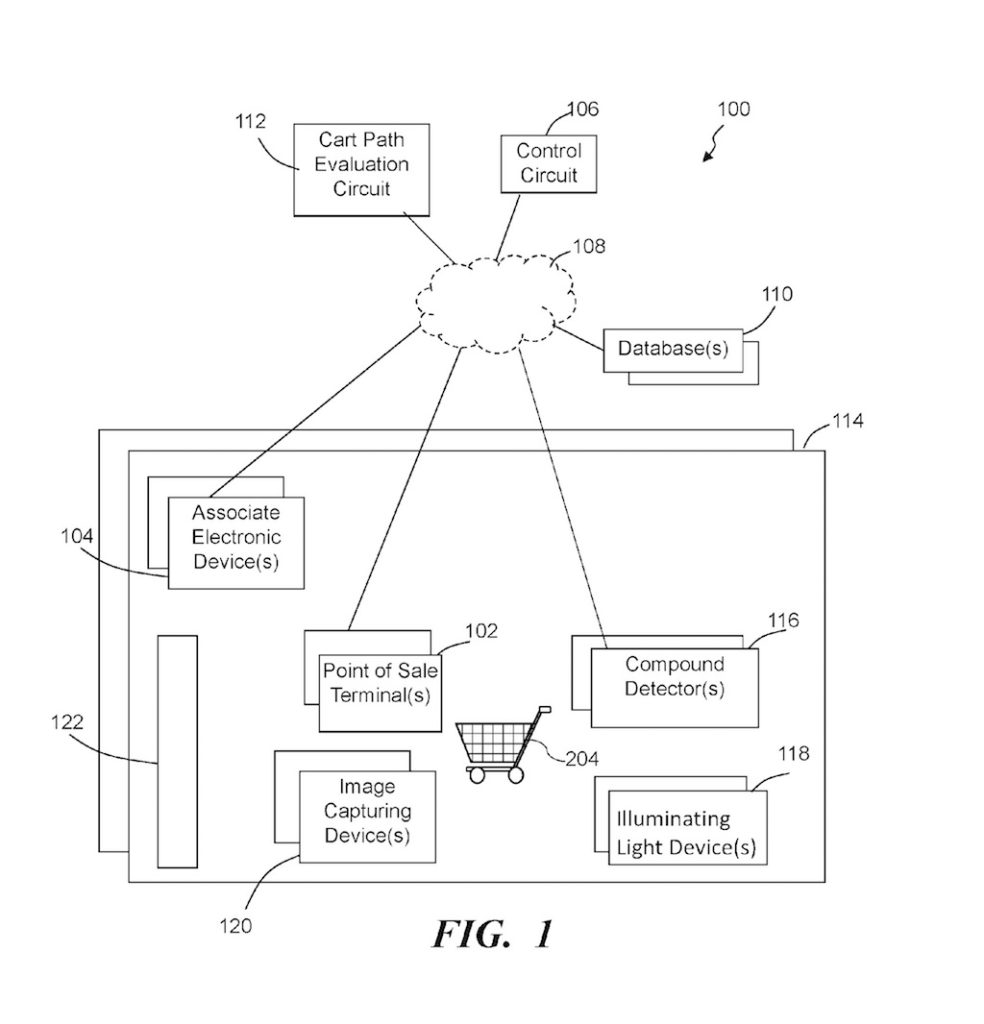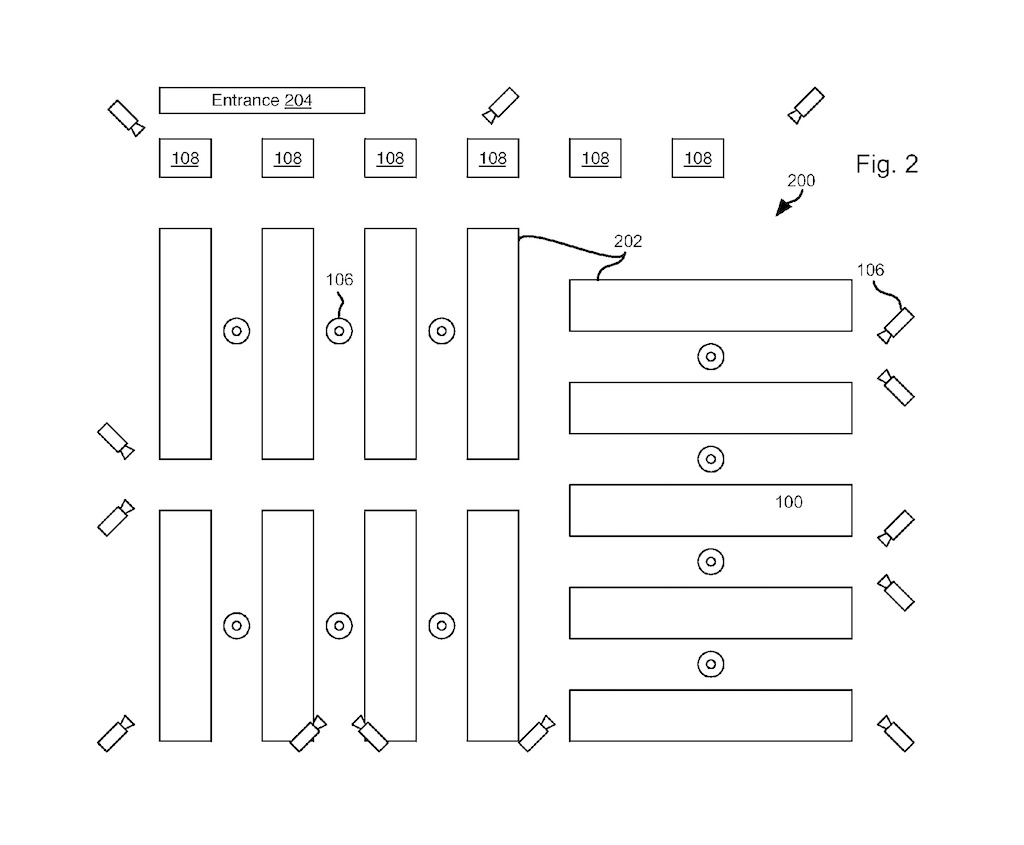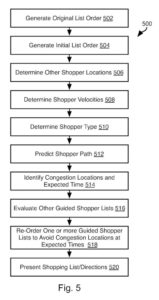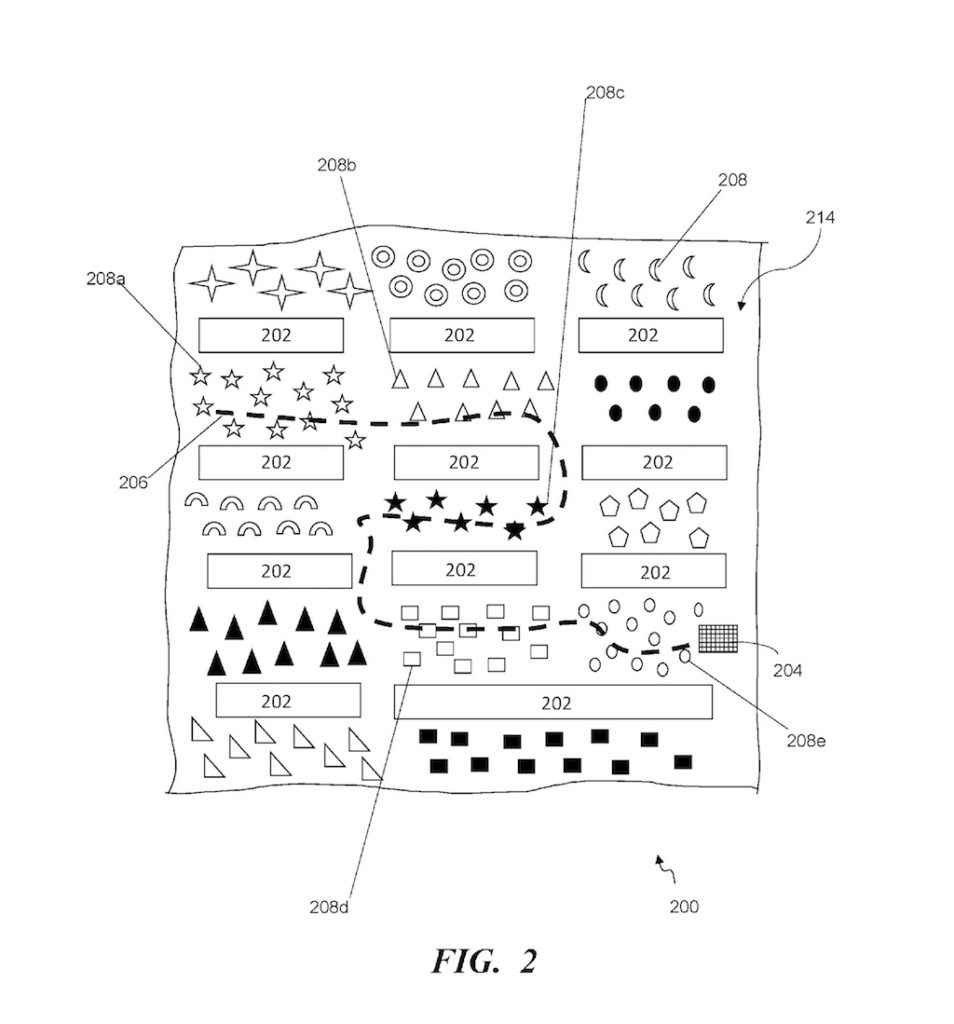New Food Economy: Walmart’s new patents will allow it to track you in its stores—with or without your consent
by H. Claire Brown | June 25th, 2018
The company’s increasing ability to harness in-store data may be its most important competitive advantage over Amazon.
Ten years ago, a wheel broke on a space rover exploring Mars. As the rover inched along, dragging its stiff wheel through the red dust that coats the planet, it scraped through the dirt and uncovered a deposit that shocked scientists back on Earth: The chemical analyzer at the end of the rover’s arm detected 90 percent pure silica, a concentration of the compound that can be formed only in the presence of water. It was some of the best evidence yet that there was once water on Mars.
Meanwhile, back on terra familiar, in sprawling parking lots across the country, Walmart may be planning to use a similar method to extract granular shopping data from the people in its stores. According to a patent issued earlier this month titled “Methods and Systems for Monitoring a Facility,” the company plans to coat its floors with various invisible substances (“oil-based, wax-based, and flecks- or flakes-based, among others”) designed to rub off onto shopping cart wheels. As customers wind their way through the aisles, their carts will accumulate layer after layer of these markers. A (presumably hidden) camera at the checkout counter snaps a photo of the wheels while the shopper is distracted with payment, and poof: Walmart has captured a map of your movements forever. It’s not water in space, but it might make some money for the Waltons.
Why is this information valuable? Well, Walmart can cross-reference data gathered from your cart wheels with line items on your receipts to figure out all kinds of other details: Whether you tend to pick up candy bars in the grocery aisle, for instance, or if you buy them impulsively at the checkout counter, instead. It could also use aggregated information to draw out subtler clues. If shoppers are browsing the electronics section without buying anything, it might amp up its promotions in that aisle.
For Walmart, the benefits are obvious. It can use cart path data to tweak its store layouts and place high-margin products in places where its customers are most likely to take the bait. For us shoppers, however, the consequences are less clear. We’ll be tracked around the store without having granted our consent—and all we get in return is a bit of extra junk on our shoes.
Privacy implications aside, the plan seems like a lot of effort on Walmart’s part for relatively little return. The company already has a lot of data on its hands. It analyzes about 200 billion rows of transactional information every couple of weeks, cross-referencing them with other sources of information like weather reports, Nielsen data, social media trends, gas prices, and even local events. It can extract most of that information with relative ease, so why waste time and money smearing chemicals on its floors?
The real value in a system that tracks shoppers’ every movement might have less to do with selling more soda and more to do with selling ad space to the brands that make the soda. For the last decade or so, the company has quietly been amping up its efforts to sell advertising real estate—both in stores and online—to the brands that hope to move their products through its stores.

Walmart/USPTO
As customers check out, an “image capturing device” and an “illuminating light device” work in tandem to photograph the substances on the cart wheels
Back in 2008, Walmart launched a program for selling digital real estate on screens inside its stores. Dubbed the SMART network, the ads were displayed on welcome screens that greeted customers as they entered the store, “category screens” a few steps away from the products in question, and “endcaps” which are within reach of the products they hawk. This system was basically a digitized version of traditional grocery store promotions, which typically involve placing attractive product displays at the ends of aisles. In 2010, trade magazine Digital Signage reported that Walmart had released figures for the first 18 months of its SMART network program, and they showed success by pretty much any metric: advertisements on the in-store digital screens increased sales of food products by 13 percent, beauty products by 28 percent, and electronics by 7 percent.
As of 2010, when the Digital Signage story was written, Walmart was tracking SMART network sales based on a system that cross-referenced the timing of its digital display advertisements with the sales of the items they promoted. Fast forward eight years, and Walmart’s new patent shows that its sales tracking system may get even more sophisticated. Rather than present Coca-Cola with data that correlates ad timing with beverage sales, wouldn’t it be better to show Coca-Cola exactly how many people walked past its ads, which of them grabbed a Sprite off the endcap instead, and which of them saw an ad four times before finally purchasing a Coke on their way out? That way, Walmart could raise prices on the highest-performing pieces of in-store real estate or make money by convincing brands that they’ll sell more crap to more people if they purchase ads on 30 in-store screens rather than 10.
The patent’s implications for Walmart’s e-commerce ad sales might be an even bigger deal. Walmart sees its in-store data collection as a major component of its competitive advantage over Amazon and any other encroaching e-tailers that are vying for its customers. The company is selling more and more advertisements on its website and app, which range from digital product suggestions at the end of an online transaction to search ads on its home page. “In-store data is Walmart’s secret sauce,” senior analyst for Forrester Research Susan Bidel told Digiday in 2017. The data allow brands hoping to advertise on the store’s website to target their audiences with a high degree of precision. “For instance, a shoe brand that targets 25- to 40-year-old women with a household income of at least $50,000 a year can exclude people who bought shoes at Walmart over the past six months, so the brand won’t serve ads to this newly shoed group,” wrote Yuyu Chen in the Digiday story.

Walmart/USPTO
Walmart has patented a system to guide shoppers away from congested areas using their shopping lists and security camera footage
To wit, another new Walmart patent issued in March provides a glimpse into how the company may be planning to combine in-store data with its growing online platform. The premise is simple: Users write a shopping list on their phones and then head to the store. Once inside, the company can track their movements in a few different ways. It can use Bluetooth beacons if they’ve downloaded the company’s app, or wi-fi information if they log into the store’s network, or—perhaps most invasively—facial recognition through its security camera systems.
After the computer system has identified the “guided” shopper’s location within the store, it scans through security camera footage to identify which aisles are the most crowded. According to the patent, the system can categorize customers based on their predicted velocity. Customers with children are likely to move slowly, for instance, while customers without carts are likely to move quickly. Once the system has compared your list to its congestion map, it re-orders your path to whisk you through the path of least resistance.

(click to view larger)
Walmart/USPTO
A flow chart for Walmart’s patented system that guides shoppers away from congested areas by reordering their shopping lists
Of course, most of us probably assume companies are able to track our every movement on their websites—how many times we look at a flower pot before we buy it, whether or not we re-order sunscreen from the same place twice in a row, whether or not we respond to ads that follow us around the internet after we glance at a pair of sneakers online. But it’s not yet a widely accepted given that we’re also tracked as we walk around inside stores and wander through their aisles. Most companies still need at least a thin layer of consent before tracking our locations—an app download, a wi-fi login, a blind signoff on a “terms and conditions” screen. But Walmart’s new patents show that the company is looking for new ways get its hands on our in-store whereabouts, whether it be through facial recognition on security cameras or chemical footprints on our shoes.
All in the name of selling a few extra Cokes.

